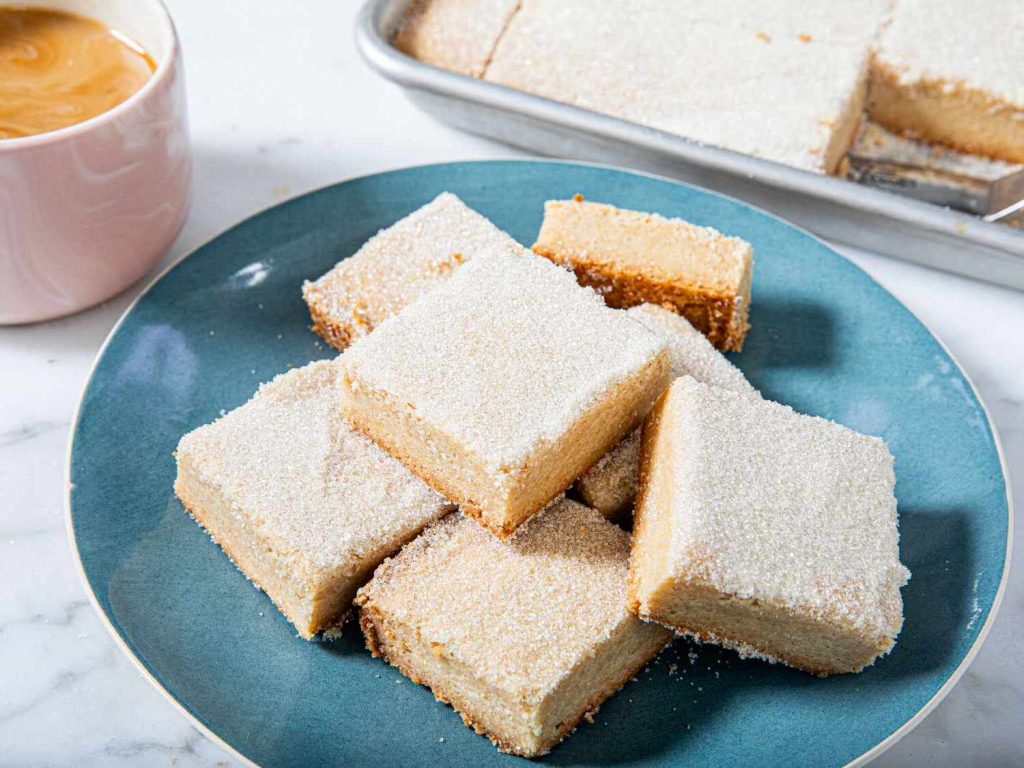Imagine biting into a piece of shortbread, that buttery, crumbly delight that melts in your mouth, and pondering its journey through history. National Shortbread Day on January 6 isn't just another day on the calendar; it's a nod to centuries of tradition, innovation, and cultural pride. From its humble beginnings in medieval Scotland to gracing the tables of royalty, shortbread has woven its way through the fabric of time to become a beloved treat worldwide. But how did this simple concoction of butter, sugar, and flour ascend to such heights? The tale is as rich and layered as the dessert itself, filled with culinary evolution, royal endorsements, and the warmth of holiday traditions. As we gear up to celebrate, let's take a moment to appreciate not just the taste but the fascinating history behind this iconic Scottish dessert. Shortbread's story is a testament to how food can transcend its basic ingredients to become a symbol of joy and heritage.
Key Takeaway
Day Activities
-
Kick off National Shortbread Day with a morning bake-off. Gather friends or family and challenge each other to create the most unique shortbread flavors. From classic vanilla to daring chocolate chili, let your imagination run wild. Share your creations on social media to spread the joy and maybe even find the next big hit in shortbread innovation.
-
Midday, why not host a shortbread tasting party? Invite neighbors or coworkers to bring their homemade shortbread or varieties they've discovered at local bakeries. It's a sweet way to bond, share stories about baking successes (and disasters), and, of course, indulge in the buttery goodness of this Scottish treat. Don't forget a pot of tea to complement the flavors!
-
As the sun sets, wrap up National Shortbread Day by diving into its rich history with a themed movie night or book club. Select films or books that feature Scotland prominently, offering a backdrop to discuss the evolution of shortbread and its cultural significance. Pair with a platter of shortbread and your favorite cozy beverages for a perfect end to the day.
Interesting Facts
1. Ancient Roman Roots
Shortbread's recipe was inspired by ancient Romans, evolving from flour, water, and honey mixtures.
2. Scottish Evolution
Originally shortbread came from "bannock bread," transitioning to include butter, sugar, and flour.
3. First Written Recipe
In 1736, "The Housewife's Closet" published the first shortbread recipe, marking its official documentation.
4. Royal Approval
Mary, Queen of Scots, introduced shortbread to the English court, winning royal favor.
5. Global Delight
On January 6, National Shortbread Day celebrates this treat's journey from Scottish homes to worldwide enjoyment.
Why We Love This Day
-
Celebrating Scottish Heritage
Who doesn't love a good throwback? National Shortbread Day is like stepping into a time machine, whisking us back to medieval Scotland where this buttery delight first made waves. It's not just about munching on cookies; it's a nod to centuries of Scottish tradition and culinary expertise. From its humble beginnings as bannock bread to becoming a staple at festive gatherings, shortbread has been warming hearts and bellies. So, let's raise a cookie to Scotland's rich history and the generations of bakers who've kept this tradition alive and kicking! -
A Treat for All Occasions
Let's be real, who needs an excuse to indulge in shortbread? But having a day dedicated to it on January 6th is like getting a golden ticket to Willy Wonka's factory. Shortbread isn't just a cookie; it's a symbol of celebration, shared during life's big moments and small victories. Weddings, holidays, or just because it's Tuesday – shortbread fits the bill perfectly. On National Shortbread Day, every bite is a reminder that the best things in life are often the simplest. -
Infinite Varieties to Savor
One word: variety. Shortbread might have started with a basic recipe, but boy, has it evolved! From classic plain to chocolate-dipped, lemon-infused, or even sprinkled with lavender, there's a shortbread flavor out there for every palate. National Shortbread Day isn't just about honoring a timeless classic; it's about celebrating how it's been reinvented over the years. It's a day to experiment with new recipes or fall back in love with traditional ones. So, why not whip up a batch or two? After all, variety is the spice of life!
Past & Future Dates
| Month | Day | Year |
|---|---|---|
| JANUARY | 6 | 2022 |
| JANUARY | 6 | 2023 |
| JANUARY | 6 | 2024 |
| JANUARY | 6 | 2025 |
| JANUARY | 6 | 2026 |
| JANUARY | 6 | 2027 |
| JANUARY | 6 | 2028 |
FAQ
Is today National Shortbread Day?
January 6. National Shortbread Day, celebrated on January 6th each year, pays homage to a delightful and crumbly treat that has delighted taste buds for centuries. Shortbread is a classic Scottish cookie known for its rich, buttery flavor and melt-in-the-mouth texture.
What national holiday is January 6th?
National Shortbread Day. January 6 marks not just a day to honor the beloved Scottish treat, but also encourages folks everywhere to indulge in or bake their own shortbread.
What is the tradition of shortbread for New Year's?
A great Hogmanay tradition is to be the first person to show up at a neighbor's or friend's home at the start of the new year, bearing symbolic gifts such as shortbread, a silver coin, a lump of coal, and whisky. These items represent food, prosperity, and warmth for the house.
Why was it called shortbread?
Shortbread is so named because of its crumbly texture (from an old meaning of the word "short", as opposed to "long", or stretchy). The cause of this texture is its high fat content, provided by the butter. The short or crumbly texture is a result of the fat inhibiting the formation of long protein (gluten) strands.
